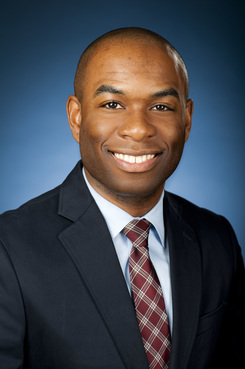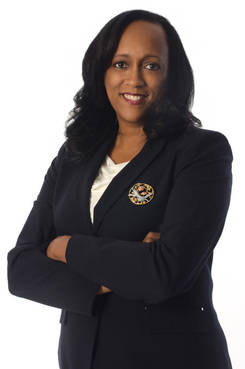 Lloyd Freeman
Lloyd Freeman
The numbers are telling. Reports issued over the course of the year indicate that law firms could do far better when it comes to building their diverse attorney ranks. And it might seem that midsize and small firms are at a disadvantage when competing for diverse talent with larger firms—particularly in New Jersey, where the New York and Philadelphia markets loom large.
But creating a firm environment that truly prioritizes diversity means more than hitting a magic number or following an exact formula, attorneys at New Jersey midsize firms have said. The key, it seems, is being proactive, partnering with bar groups and other organizations that can help, and being persistent in a field where one’s practice obligations alone can be more than a full-time job.
“Diversity is when you count people; inclusion is when you make people count,” said Lloyd Freeman, a partner at Haddonfield’s Archer & Greiner, where he heads a firm affinity program he helped found, “Lawyers Encouraging Archer’s Diversity” (LEAD).
An effective diversity initiative must develop rainmakers and retain them—lawyers who “end up eventually being in firm management,” said Freeman, the current president of the Garden State Bar Association, which represents African-American attorneys in the state.
Archer & Greiner, in tandem with the GSBA and Panasonic Corp., recently launched a program creating an eight-week paid summer associate position, to be filled by a diverse candidate who would spend half the term at the firm and the other half at Panasonic.
“It’s just another of these mechanisms” to improve diversity in the legal industry, Freeman said, noting that Archer & Greiner also has engaged Rutgers Law School and the Philadelphia Diversity Law Group in connection with those efforts. “We can kind of mold their careers from the very beginning.”
 Tracey Salmon-Smith
Tracey Salmon-Smith
Indeed, recruiting and retention are the pillars, and each is challenging for different reasons, said Tracey Salmon-Smith, a litigation partner and, since last year, the chairwoman of the Diversity and Inclusion Committee at 180-lawyer Bressler, Amery & Ross, based in Florham Park. The 11-member panel includes partners and associates, and each of the firm’s six offices are represented.
“It’s something that’s hard to measure because you’re not trying to go on pure numbers,” Salmon-Smith said. “Sometimes people run into trouble when they start to talk about numbers. You don’t want a body here just because they fill a certain demographic. … That doesn’t help anybody.”
In 2017, Salmon-Smith approached Bressler Amery’s managing partner, Brian Amery, about joining the committee, which “sends a message to the other lawyers at the firm that this is an important committee,” she said. “He readily agreed.”
Messaging is one thing, but actually doing the work of improving diversity requires much more than meetings. Recruiting efforts at Bressler Amery involve connecting with the law school at Howard University in Washington, D.C., a historically black institution, the National Black Law Students Association, and the New York City Bar Association, which has a diversity fellowship program. As for retention, the firm sponsors and otherwise gets involved with organizations supported by law schools and firm clients, such as NJ LEEP, a Newark-based group seeking to open college opportunities for low-income youths, and the Newark Boys Chorus School, through an annual “Lawyers Leading the Way” fundraiser.
On the whole, the firm has had “some success,” and ”our clients seem to be happy with our progress in this area,” she said. Law students are “doing the research,” Salmon-Smith said. “They’re looking at and questioning that the law firm they go to is an inclusive environment.” At the partner level, however, “we weren’t getting a lot of traction on our own,” so the firm engaged Ron Jordan of Carter-White & Shaw, a Maryland-based legal search firm focused on placing diverse attorneys.
Jordan, reached by phone, said there are attorneys of color at every level looking for a position, or looking to change positions, and challenged the notion that scarcity of diverse candidates negatively impacts recruiting efforts.
“Law firms, whether they’re Am Law 100 or 200, or midsize … they all go to the same well,” Jordan said. “They have no conception of developing relationships with law schools.”
Some historically black institutions, such as North Carolina Central University School of Law, are neglected in firm recruiting efforts, he said.
Salmon-Smith acknowledged that small and midsize firms “definitely have a little harder struggle” than large firms, but it’s “not an impossible struggle.”
“It is a struggle, but you’ve got to get out there and recruit,” she added.


